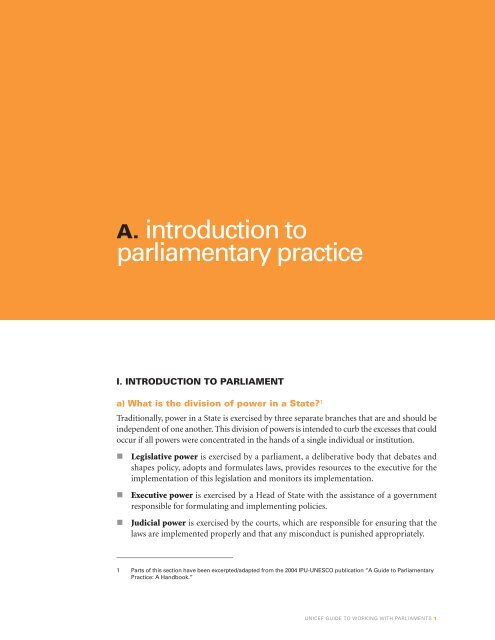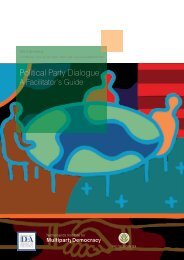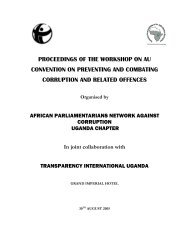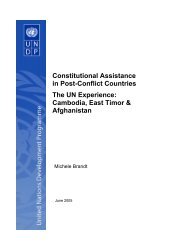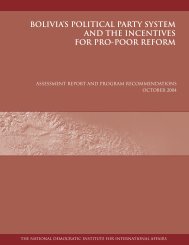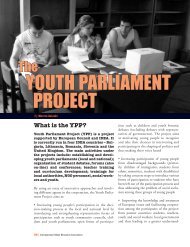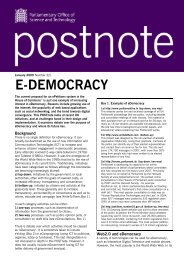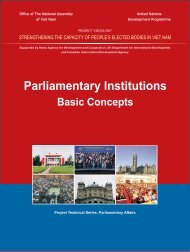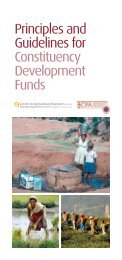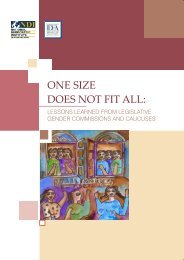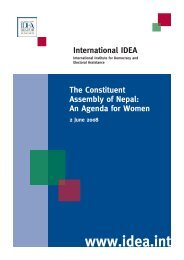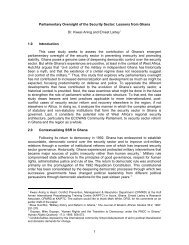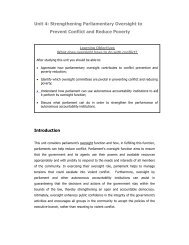guide to working with parliaments - Unicef
guide to working with parliaments - Unicef
guide to working with parliaments - Unicef
You also want an ePaper? Increase the reach of your titles
YUMPU automatically turns print PDFs into web optimized ePapers that Google loves.
A. introduction <strong>to</strong><br />
parliamentary practice<br />
I. INTRODUCTION TO PARLIAMENT<br />
a) What is the division of power in a State? 1<br />
Traditionally, power in a State is exercised by three separate branches that are and should be<br />
independent of one another. This division of powers is intended <strong>to</strong> curb the excesses that could<br />
occur if all powers were concentrated in the hands of a single individual or institution.<br />
<br />
<br />
<br />
Legislative power is exercised by a parliament, a deliberative body that debates and<br />
shapes policy, adopts and formulates laws, provides resources <strong>to</strong> the executive for the<br />
implementation of this legislation and moni<strong>to</strong>rs its implementation.<br />
Executive power is exercised by a Head of State <strong>with</strong> the assistance of a government<br />
responsible for formulating and implementing policies.<br />
Judicial power is exercised by the courts, which are responsible for ensuring that the<br />
laws are implemented properly and that any misconduct is punished appropriately.<br />
1 Parts of this section have been excerpted/adapted from the 2004 IPU-UNESCO publication “A Guide <strong>to</strong> Parliamentary<br />
Practice: A Handbook.”<br />
UNICEF GUIDE TO WORKING WITH PARLIAMENTS 1


